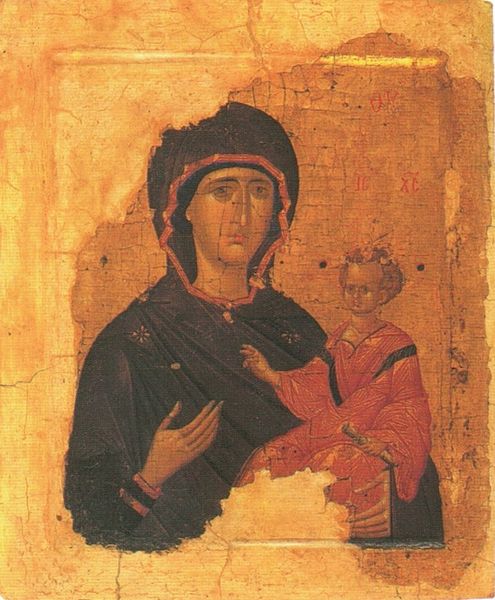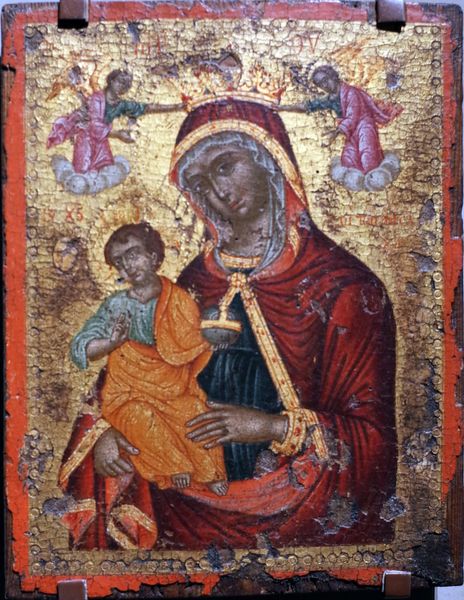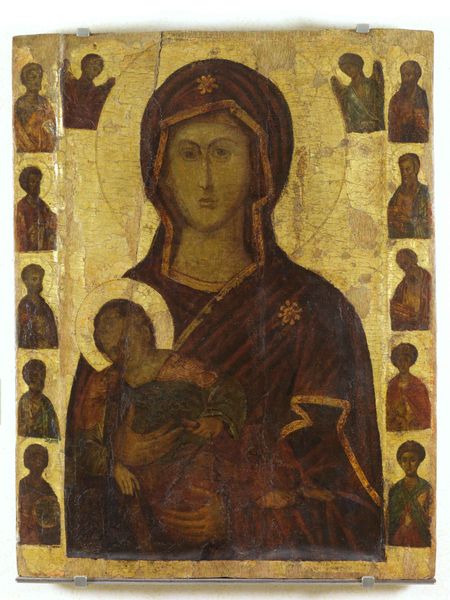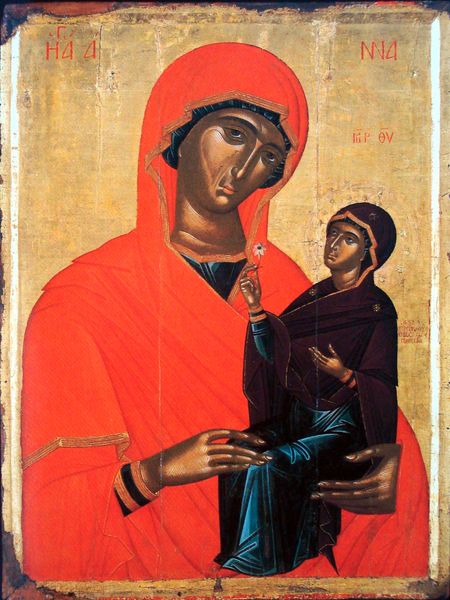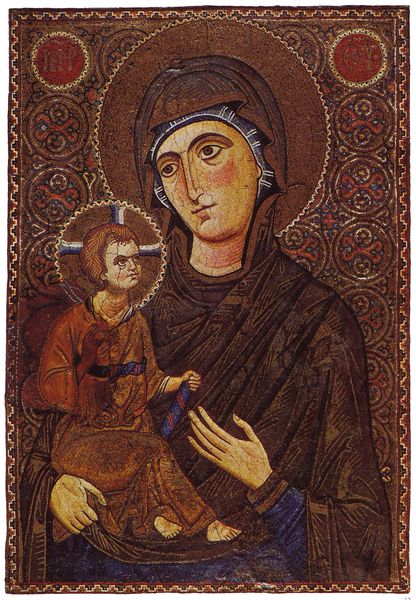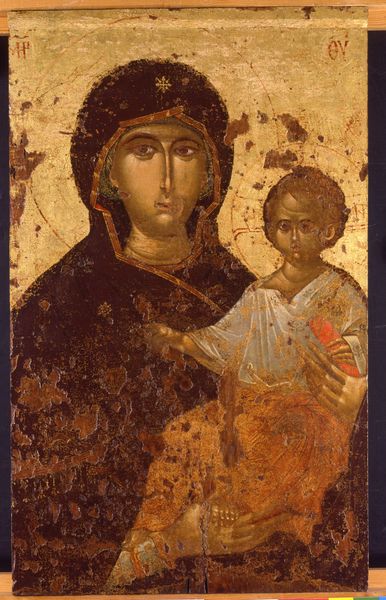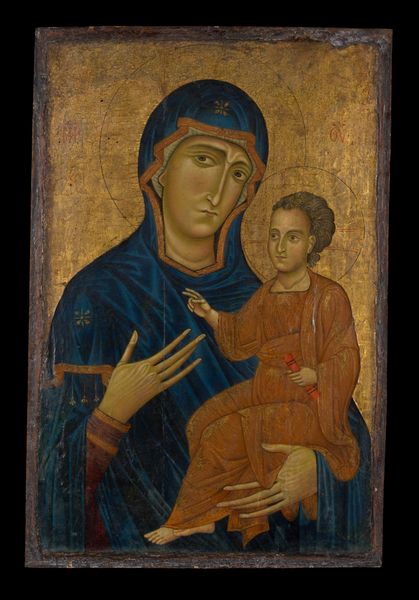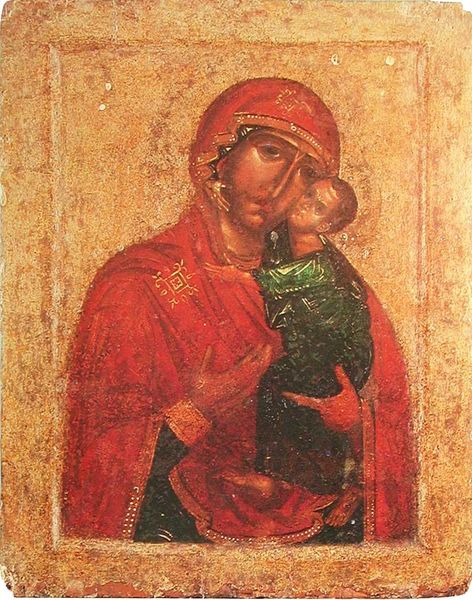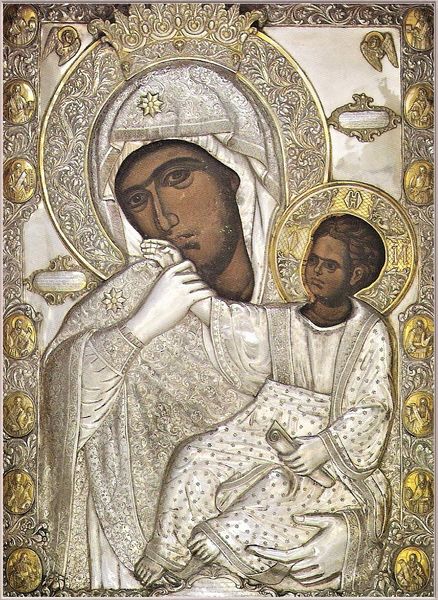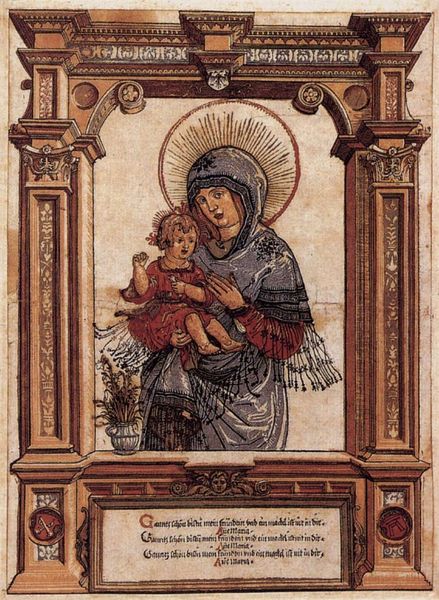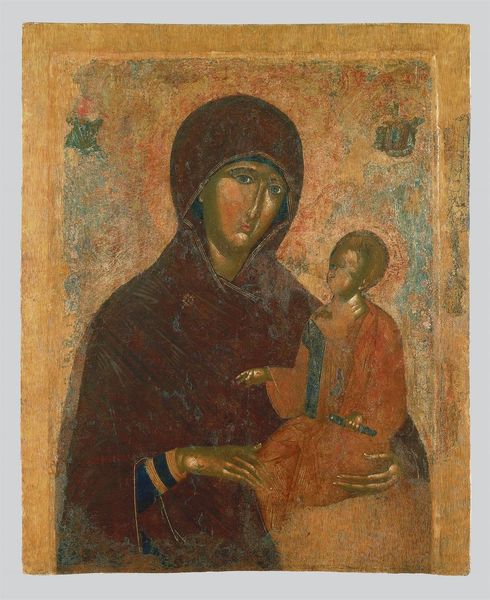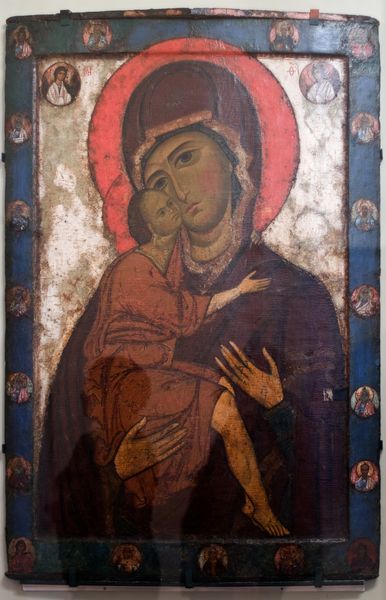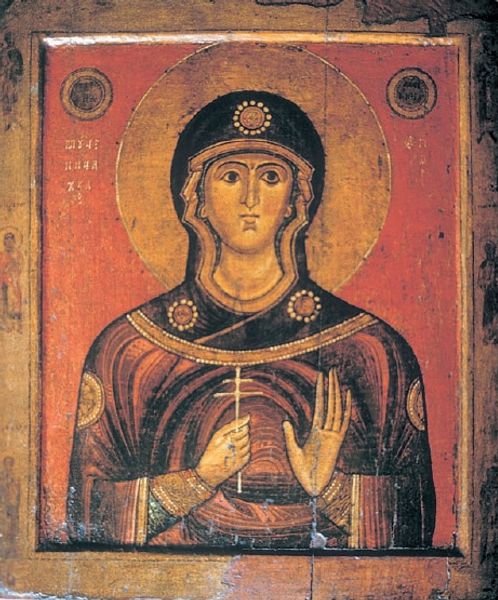
tempera, painting
#
portrait
#
byzantine-art
#
medieval
#
tempera
#
painting
#
figuration
#
oil painting
#
miniature
Copyright: Orthodox Icons,Fair Use
Editor: This is the "Virgin Psychosostria Ohrid," a tempera painting from around 1350, rendered in a Byzantine style. There's a profound sense of gravity, but also tenderness in the Virgin's gaze. What do you see in this piece, particularly concerning its historical and cultural implications? Curator: I see a powerful assertion of identity, deeply intertwined with both religious devotion and a specific socio-political context. Consider the Byzantine Empire in 1350 – it was weakened, fragmented. Icons like this weren't just devotional objects; they were cultural anchors, affirming Orthodox identity in a world undergoing immense change and external pressures. Notice the stylized rendering – the elongated figures, the flat perspective. How does this contribute to the overall meaning? Editor: I guess the flatness and stylization emphasizes the symbolic over the realistic? The figures become more about the *idea* of the Virgin and Child than an actual mother and baby? Curator: Exactly! This deliberate artistic choice moves beyond simple representation. Think about the role of women in the Byzantine world, often confined yet spiritually powerful. The Virgin, through icons like these, becomes a focal point for both religious aspiration and, perhaps, a silent assertion of female influence. The gaze isn't just tender, is it? Is there an element of resilience in there too? Editor: I see what you mean. There's strength and resolve, even in her melancholy. Almost a challenge to the viewer. Curator: And remember, art never exists in a vacuum. Understanding the historical anxieties, the social constraints, and the enduring spiritual power projected onto figures like the Virgin, allows us to really see the depth within this icon. What have you noticed that you perhaps didn’t expect? Editor: That a religious object could simultaneously be a complex political statement! Curator: Precisely. It prompts us to see these objects as far more than just simple expressions of faith; they are evidence of a living culture.
Comments
No comments
Be the first to comment and join the conversation on the ultimate creative platform.
